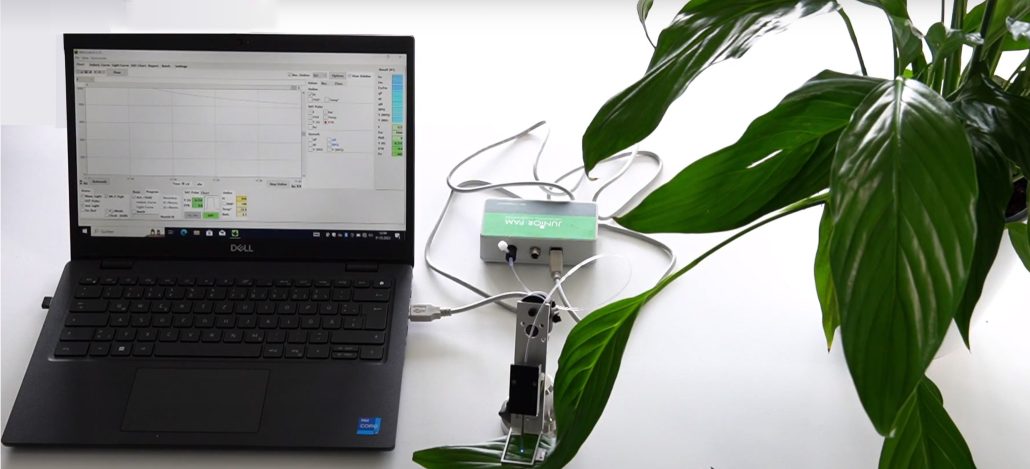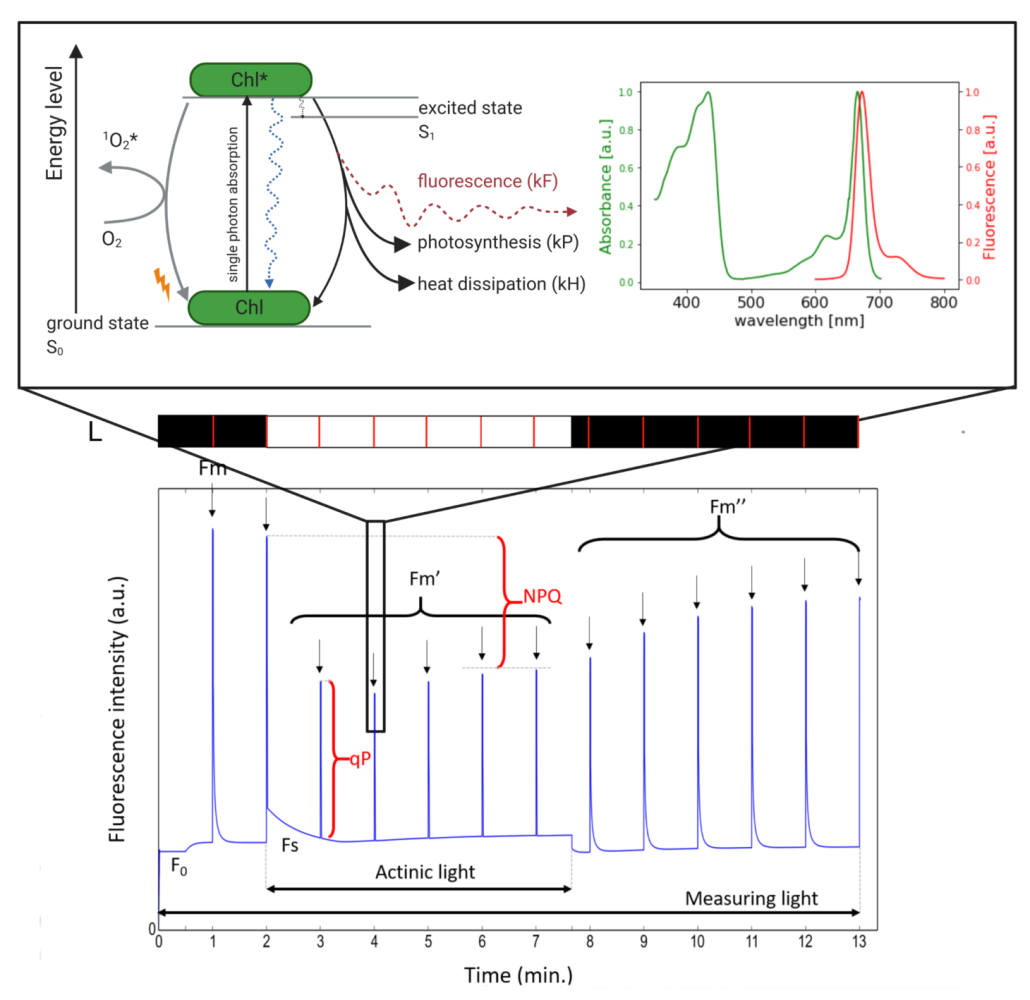New Teaching Tool, “ComPhot: Computational Photosynthesis”
We are excited to announce the publication of The Plant Cell’s latest Teaching Tool, “ComPhot,” by Sarah Philipps, Tobias Pfennig, Elouën Corvest, Marvin van Aalst, Lisa Fürtauer, and Anna Matuszyńska.
About ComPhot
 ComPhot is a simulation-based learning platform developed by a team of passionate students and researchers to facilitate the study of photosynthesis through computational models. The project was led by Anna Matuszyńska, a Junior Professor in Computational Life Science at RWTH Aachen University, who assembled a team with diverse strengths in education, plant science, and modeling to create a web-based learning module that integrates modeling approaches into the study of photosynthesis. With a user-friendly interface and diverse learning modules, ComPhot aims to inspire and educate students and researchers in the field of computational biology.
ComPhot is a simulation-based learning platform developed by a team of passionate students and researchers to facilitate the study of photosynthesis through computational models. The project was led by Anna Matuszyńska, a Junior Professor in Computational Life Science at RWTH Aachen University, who assembled a team with diverse strengths in education, plant science, and modeling to create a web-based learning module that integrates modeling approaches into the study of photosynthesis. With a user-friendly interface and diverse learning modules, ComPhot aims to inspire and educate students and researchers in the field of computational biology.
The project started as a bachelor thesis of Sarah Philipps, studying to become a teacher in mathematics and biology at RWTH Aachen University, Germany. Under the supervision of Anna Matuszyńska, Head of the Computational Photobiology Lab, she has designed the alpha version of the teaching platform. Philipps describes her motivation:
“I wanted to create the possibility to understand a complex biological process by developing a method that not only evaluates given graphs but also involves the learners in the experimental process, thus overcoming the challenge of incorporating long-term experiments into the teaching.”
Anna Matuszyńska coordinated this project and assembed a group of motivated creators to expand the platform by including more dedicated material. She says,
I am especially proud that the work was fueled by three students, each on a different step of their higher academic career, with Sarah just completing her bachelor’s degree, Elouen starting his master’s studies and Tobias, pursuing his doctoral project.“
Motivation
 Recent studies emphasize the effectiveness of active learning formats, and in line with this, ComPhot is a step towards revolutionising education in computational biology. The platform serves as a user-friendly, no-code tool that simplifies the study of photosynthesis through a computational model, making it accessible to motivated students and researchers. ComPhot provides a comprehensive approach to learning, combining biochemical background explanations with practical applications. Users can engage in simulations, manipulate parameters, and conduct in silico experiments, gaining fundamental insights into photosynthesis, photoprotection, and fluorescence measurements.
Recent studies emphasize the effectiveness of active learning formats, and in line with this, ComPhot is a step towards revolutionising education in computational biology. The platform serves as a user-friendly, no-code tool that simplifies the study of photosynthesis through a computational model, making it accessible to motivated students and researchers. ComPhot provides a comprehensive approach to learning, combining biochemical background explanations with practical applications. Users can engage in simulations, manipulate parameters, and conduct in silico experiments, gaining fundamental insights into photosynthesis, photoprotection, and fluorescence measurements.
“Teaching people is one of the hardest jobs there is, not only because it needs a fundamental knowledge of the subject and an acquired people skill, but also because there is so much pressure behind it. Because of teaching, we humans have evolved to comprehend even the most complicated subjects and can give it to our children. We kept this philosophy in mind when creating ComPhot. Our goal is to not only teach biology students about computational modeling but also to show mathematically-oriented students the vital importance of biology. By bringing these two scientific fields together, we hope to inspire a brighter future.” – adds Elouen Corvest, who wrote his bachelor thesis in the Matuszyńska Lab on reproducing mathematical models of photosynthesis.
Indeed, photosynthesis is the main research topic of the group.
As Tobias Pfennig claims
“Everybody should be able to learn about photosynthesis since our lives would be impossible without it. And ComPhot links that with valuable computational methods for today’s scientists.“
Features Editor Mary Williams concurs, saying “I was inspired by the article published a few years ago calling for a greater incorporation of quantitative and computational training into plant science degrees (Friesner et al., 2017) so excited to have the opportunity to bring ComPhot to the community.”
Marvin van Aalst adds
“When I first saw the tool, I immediately was excited about how it can enable every student to learn at their own pace and revisit material whenever needed. So I was happy to contribute when the team asked me to help streamline and optimise the code.”
It took several months of tweaking, improving and rewriting, to reach the final version of the tool and we are thankful to our anonymous reviewers and the Editor Mary Williams for their invaluable suggestions.
“It was amazing to see how the platform developed from its original idea. I hope we can spark the interest of future users and excite them about computational modelling and plant science” comments Lisa Fürtauer.
Key Features of ComPhot:
- User-Friendly Interface: ComPhot offers an easy-to-use, no-code platform accessible online or for local offline use.
- Multilingual Support: Released in English, German, French, and Polish, four mother-languages of the developers, to broaden its global audience.
- Tailored Learning Paths: Two versions, 4Bio and 4Math, cater to students with backgrounds in biology or mathematics, respectively.
- Interactive Learning Modules: The platform covers topics such as Photosynthesis, Measuring Method, Computational Models, Experiments in Silico, and Plant Light Memory.
- Versatile Learning Objectives: Regardless of background, users can delve into state-of-the-art measurements in plant sciences, explore plant short-term memory, and understand the interplay between experimental and computational biology.
ComPhot is available online at https://comphot-biotool.streamlit.app/ or can be downloaded from https://github.com/AnnaMatuszynska/biotool-photosynthesis.
Download the resources here. Note that this article does not include a set of PowerPoint slides, unlike the other articles in this series. This is article number 44 in the Teaching Tools in Plant Biology series. You can find all of the Teaching Tools in Plant Biology articles here.





